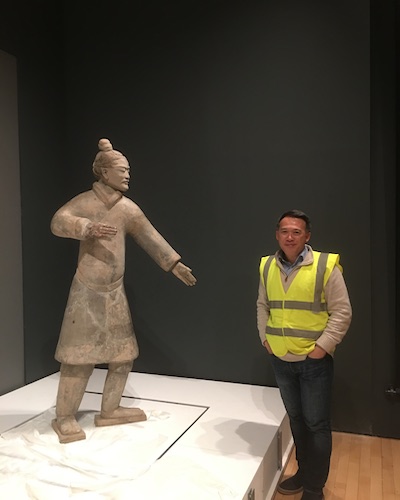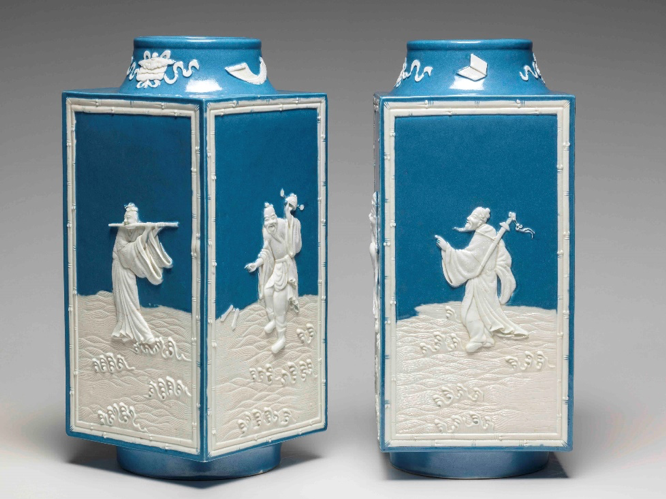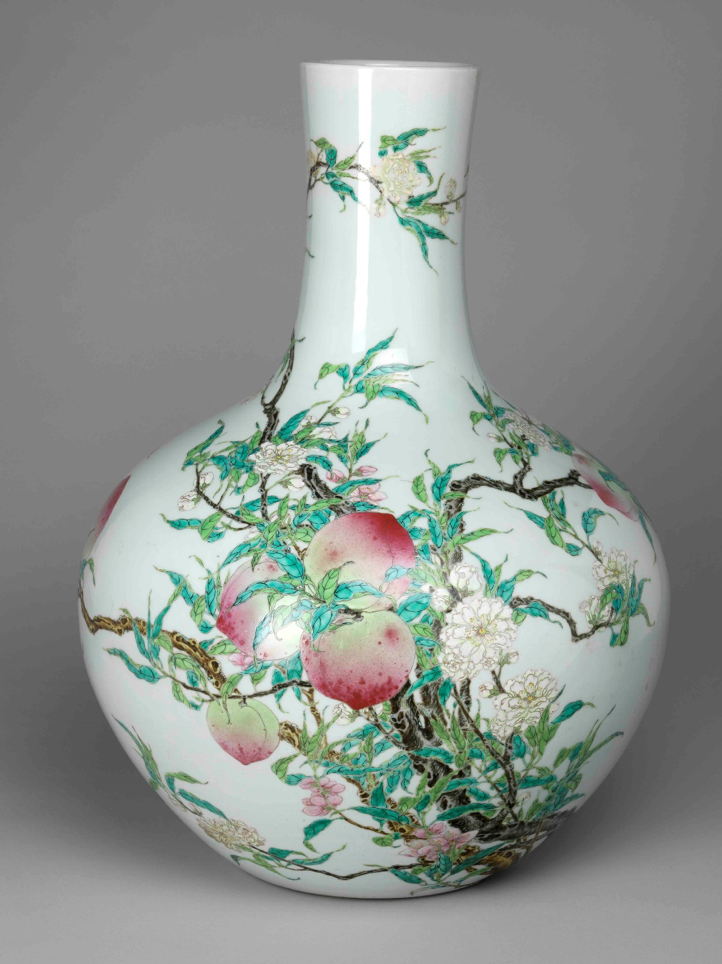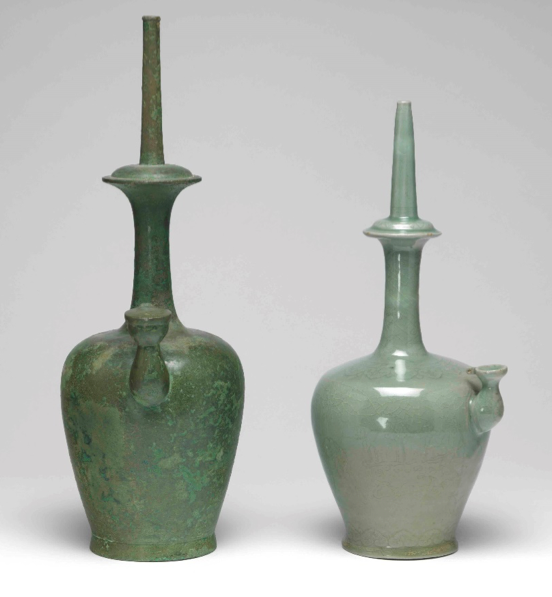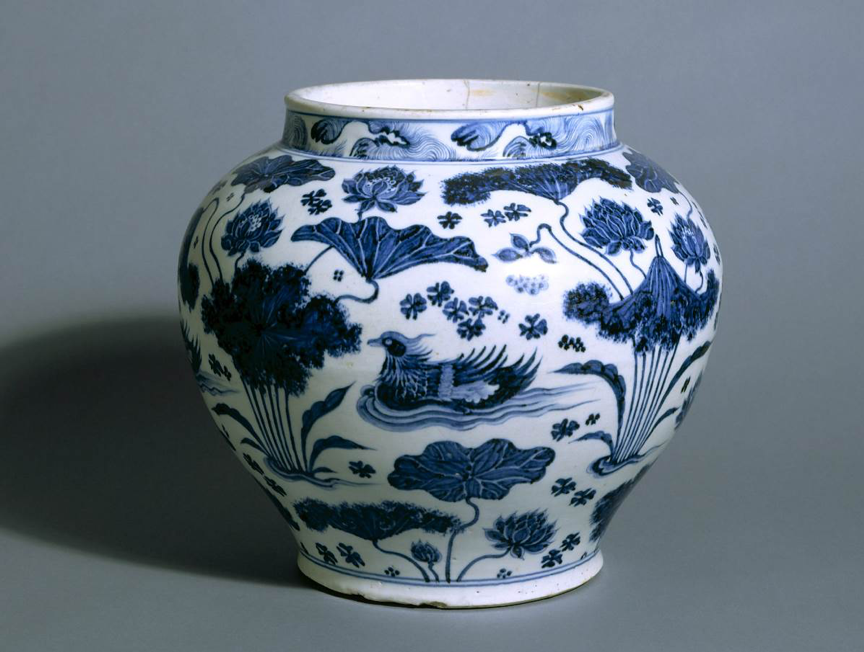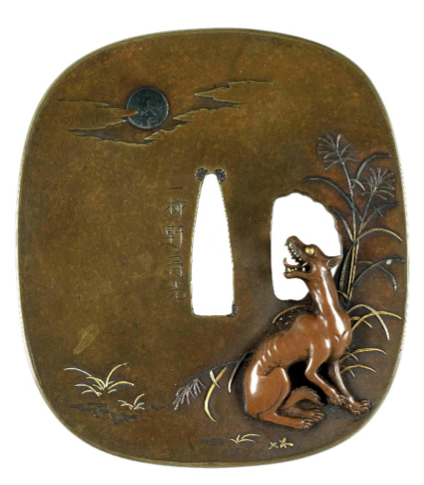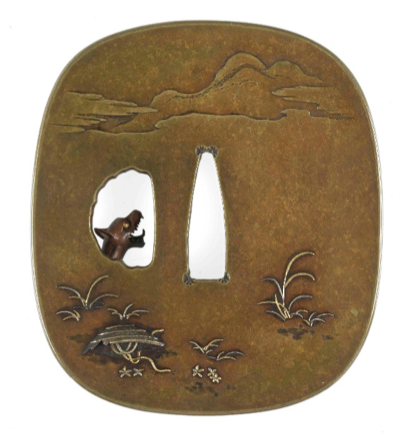James Lin
D. Phil in Chinese Art & Archaeology, Oxford University
Senior Assistant Keeper, Department of Applied Arts, Fitzwilliam Museum, Cambridge
Guest curator at National Museum, Liverpool (September 2016-February 2018)
Christensen Fellow of Michael Sullivan Chinese Painting Gallery, Ashmolean Museum, Oxford (November 2002-August 2004)
Special Assistant for Chinese Jade gallery installation, The British Museum, London (June-November 2002)
This pair of square lozenge-section vases was hidden in the reserve since they were bequeathed by Lady Pratt in 1993. They are in the shape of a Chinese Neolithic jade cong tube or Song dynasty Longquan vase, each decorated in relief with four figures of Daoist immortals and stamped in the base with six characters ‘Da Qing Qian Long Nian Zhi (made in the reign of Emperor Qianlong of the Great Qing Dynasty, r. 1736-95)’. The emulation of Wedgwood’s jasperware caught my attention and it is probably the only example we have found so far where the Chinese imitated British Wedgwood.
In her letter to the museum dated 21st November 1987, Lady Pratt mentioned that this pair of vases was given to Sir John Pratt as a parting gift by the Viceroy of Nanking. It is almost impossible to find out how this pair of vases left the Forbidden City and ended up in the hands of the Viceroy of Nanking. When Lord Macartney, the British Ambassador, visited China in 1792, British Wedgwood was presented as part of the tributes to the Emperor Qianlong. However, during my field research in both the National Palace Museum, Taipei and Palace Museum, Beijing, I was told that there is no British Wedgwood in either collection. It is impossible that this type of glaze suddenly appeared in the Qianlong period without any context. Were the British tributes recorded in imperial texts? Were they destroyed or looted during the Franco-British expedition to the Summer Palace? It is another interesting subject that is worthy of more research.
